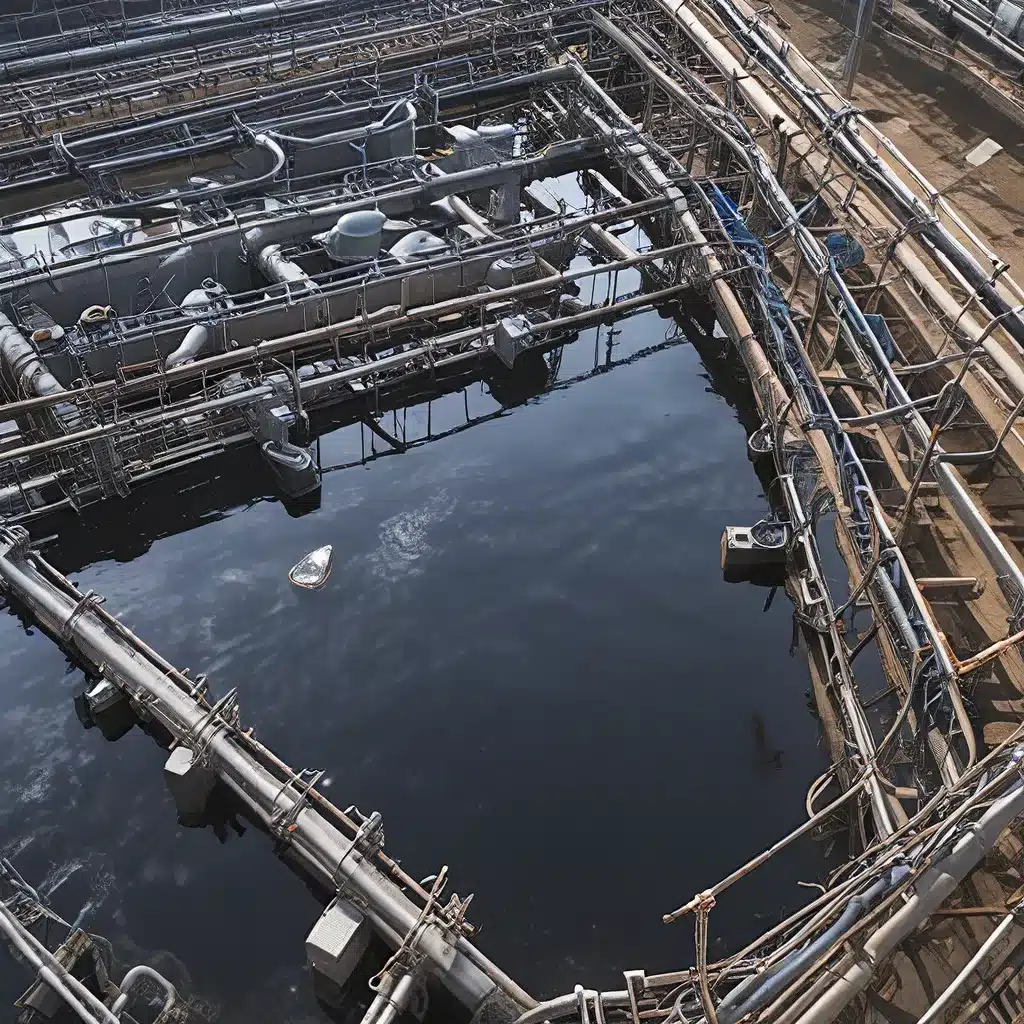
In the dynamic world of wastewater treatment, efficiency is the holy grail that operators, engineers, and environmentalists alike are constantly chasing. But what if I told you that the key to unlocking unprecedented levels of optimization lies not in the physical infrastructure, but in the realm of data analytics?
Unveiling the Power of Artificial Neural Networks
Picture this: a wastewater treatment plant, bustling with activity, where millions of gallons of effluent are processed daily. Traditionally, the fine-tuning of these complex systems has relied on the intuition and experience of seasoned professionals. But what if I told you that a new technology, inspired by the very structure of the human brain, is poised to revolutionize the way we approach this challenge?
Artificial Neural Networks (ANNs), a branch of machine learning, are computational models that mimic the neural interconnections of the brain. These powerful algorithms can identify intricate patterns and relationships within vast datasets, learning to make predictions and decisions with uncanny accuracy.
Imagine a scenario where an ANN is tasked with optimizing the nutrient removal process in a High Rate Algal Pond (HRAP) – a sustainable wastewater treatment technology that harnesses the power of microalgae. The ANN would sift through years’ worth of operational data, analyzing factors like pH, temperature, and biomass concentration, to uncover the complex web of dependencies that govern the system’s performance. Armed with this deep understanding, the ANN could then recommend precise adjustments to operational parameters, enabling the plant to fine-tune its processes and maximize efficiency.
Diving into the HRAP Ecosystem
But let’s not get ahead of ourselves. To truly appreciate the game-changing potential of ANNs in wastewater treatment, we need to first dive into the fascinating world of HRAPs.
HRAPs are shallow, open-air ponds designed to cultivate microalgae for the purpose of wastewater treatment. These systems leverage the natural ability of these microscopic organisms to absorb nutrients like nitrogen and phosphorus, transforming pollutants into valuable biomass. The result? Efficient nutrient removal and the potential for resource recovery – a win-win for both the environment and the bottom line.
But managing an HRAP system is no easy feat. Factors like temperature, pH, and hydraulic retention time can significantly impact the performance of the microalgae, and striking the right balance requires a keen eye and a wealth of experience. This is where the power of ANNs truly shines.
Revolutionizing HRAP Design, Operation, and Optimization
Imagine an HRAP system where an ANN is integrated into the control and monitoring systems, constantly analyzing real-time data to identify optimal operating conditions. This intelligent algorithm could detect subtle changes in the microalgae population, adjusting parameters like nutrient dosing or aeration to maintain peak efficiency.
But the benefits of ANNs extend far beyond day-to-day operations. These powerful tools can also revolutionize the design and optimization of HRAP systems. By analyzing data from existing facilities, ANNs can uncover the critical design variables that drive performance, enabling engineers to create more efficient and cost-effective systems from the ground up.
And the potential doesn’t stop there. ANNs can also play a pivotal role in monitoring and predictive maintenance, helping operators anticipate potential issues before they arise and implement proactive maintenance strategies. Imagine a scenario where an ANN detects a gradual decline in microalgae growth, prompting the system to adjust nutrient levels or trigger an inspection, preventing a costly breakdown and ensuring uninterrupted operations.
Challenges and Opportunities on the Horizon
Of course, the integration of ANNs into HRAP systems is not without its challenges. Concerns around data privacy, cybersecurity, and the “black box” nature of some ANN models may require careful consideration and robust safeguards. Additionally, the successful implementation of these technologies will likely require a new breed of wastewater treatment professionals, skilled in both the intricacies of HRAP operations and the nuances of data science.
But the potential rewards far outweigh the risks. As we continue to grapple with the pressing environmental challenges of our time, the ability to maximize the efficiency of wastewater treatment systems has never been more critical. And with the transformative power of ANNs at our fingertips, the future of HRAP optimization looks brighter than ever.
So, the next time you visit your local wastewater treatment plant, take a moment to ponder the invisible revolution unfolding behind the scenes. For in the realm of data analytics, the key to unlocking the full potential of sustainable wastewater treatment may very well lie.
In the meantime, I encourage you to explore the Inland Waters website to learn more about the latest innovations in environmental services and water treatment. Who knows, you might just stumble upon the next breakthrough that will change the game forever.


